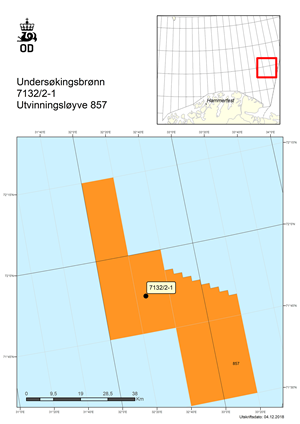Equinor has dry well in the southeastern Barents Sea
STAVANGER -- Wildcat well 7132/2-1 was drilled about 109 mi (175 km) north of Vardø, in the southeastern part of the Barents Sea.
The primary exploration target for the well was to prove petroleum in reservoir rocks from the Middle and Early Jurassic Age (the Stø, Nordmela, Tubåen and Fruholmen formation). The secondary exploration target was reservoir rocks from the Early Cretaceous and Late Triassic Age (upper part of the Snadd formation).
In the primary exploration target, well 7132/2-1 encountered about 49 ft (15 m) of sandstone reservoir with good reservoir quality in the Støformasjonen. In the Nordmela, Tubåen and Fruholmen formation, the well encountered about 82 ft (25 m) of sandstone reservoir with very good reservoir quality. The well is dry.
No reservoir rocks were encountered in the secondary exploration target in the Lower Cretaceous. In the upper part of the Snadd formation, the well encountered a water-filled sandstone reservoir totalling about 98 ft (30 m) with moderate to good reservoir quality.
Extensive data acquisition and sampling have been carried out.
This is the first exploration well in production licence 857. The licence was awarded in the 23rd licensing round in 2016.
Well 7132/2-1 was drilled to a vertical depth of 2,795 ft (852 m) below the sea surface and was terminated in the upper part of the Snadd formation in the Late Triassic. Water depth at the site is 961 ft (293 m). The well has been permanently plugged and abandoned.
Well 7132/2-1 was drilled by the West Hercules drilling facility, which will now drill wildcat well 7132/2-2 in the same production licence.



